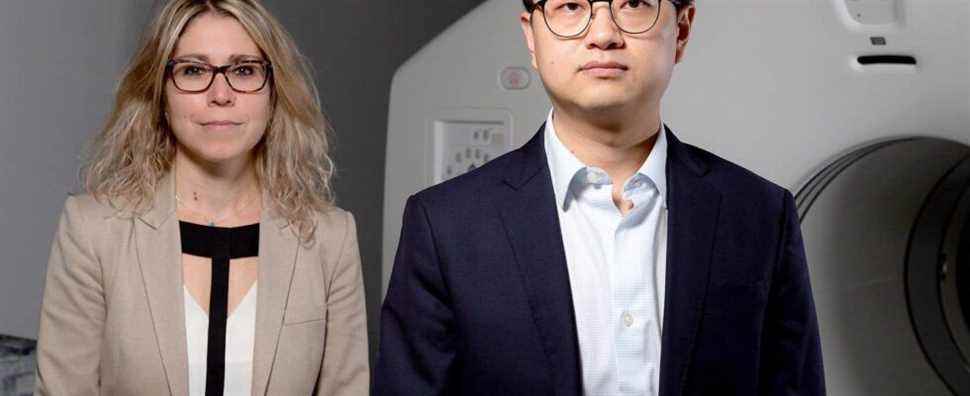This text is part of the special Research section
About 80% of people will be affected at least once in their life by back pain, which will be recurrent in 20% of cases. Researchers at Concordia University have developed a new technique to help localize lower back pain and, ultimately, better treat this “ill of the century”.
“Lumbar pain is very common and complex to treat. They are also a socioeconomic burden for society,” notes Maryse Fortin, assistant professor in the Department of Health, Kinesiology and Applied Physiology at Concordia University. And the pandemic has not helped: people are less mobile and work in poorly adapted spaces.
However, if lumbar problems are common, finding their source and treating them remains very difficult. “In 85% of people with chronic lower back pain, it is not possible to precisely locate the source of the pain”, continues the researcher trained in sports therapy. She specializes in image analysis of the spine, more particularly of the lumbar muscles, in association with various lumbar pathologies.
new technique
Several clinical studies had already observed that the muscles in people with chronic lower back pain changed. “Traditionally, we measure the changes in muscle size and volume, and in its composition (the amount of fat that infiltrates it), that occur in people with lower back pain,” explains Ms.me Fort.
However, the results of this research are not always consistent, particularly because muscle measurement methods differ. Other variables can also affect size and fatty infiltration, such as gender and age. “It is therefore difficult to compare the results. These techniques also require a lot of manual work,” she notes.
This is where the expertise of Yiming Xiao, assistant professor of computer science and software engineering at Concordia University and first author of the study, comes into play: his knowledge of automation could be used to accelerate analyzes . Along with other colleagues at Concordia University and Western University in Ontario, the researchers set out to develop a new technique that combines magnetic resonance imaging (MRI) and statistical analysis to help pinpoint the source of lower back pain.
New biomarker
To test this technique, the researchers recruited 24 people who presented with a unilateral lumbar disc herniation, whose pain appeared on the same side as the herniation. They observed the spine and the muscles at the same level (L5-S1) and compared the side affected by the hernia and the healthy side.
They mostly looked at the shape of the muscle, rather than just its size. “We wanted to know if localized changes in muscle shape could be a biomarker of pathology, even if the person is not feeling pain,” says Xiao, whose postdoctoral research on brain structure inspired this study. technical. The researchers then used statistical shape analysis to identify potential trends and to detect changes in the morphology of muscles affected by low back pain. The results were published in the journal Scientific Report last August.
New Horizons
Two main findings emerge from the published study. First, the statistical shape analysis technique confirms that the change in muscle shape could be used as a biomarker to identify the muscle or muscles affected by a herniated disc. “This technique is more sensitive in detecting the difference between the muscles affected by the disease and those that are not, compared to traditional techniques,” says Xiao.
The researchers also observed that, for this specific hernia (at the L5-S1 level), “the changes in the muscle were taking place lower than the hernia [le disque de la colonne vertébrale déplacé] notes Mr. Xiao. “It confirms how delicate the study of the spine is. If we don’t consider the shape of the muscle, we are missing a piece of the story,” adds M.me Fort.
While clinical research is generally limited to around thirty participants, the use of machine learning and automation would also make it possible to reveal trends by exploiting the power of big data.
This new technique could ultimately be used to detect other pathologies, and thus help many people struggling with pain whose origin often remains unknown. “Herniated discs are just an entry point to explore this technique and improve the diagnosis of spinal disorders,” Xiao hopes.
